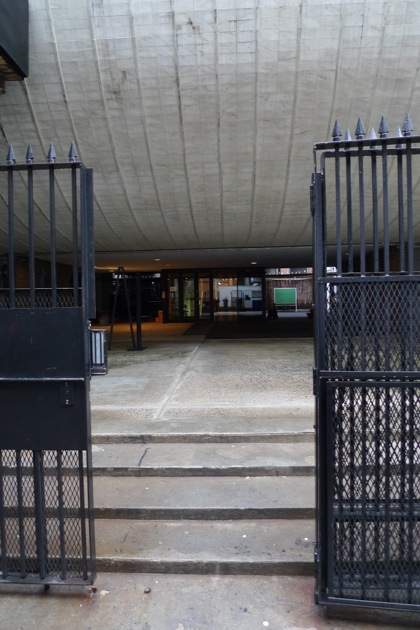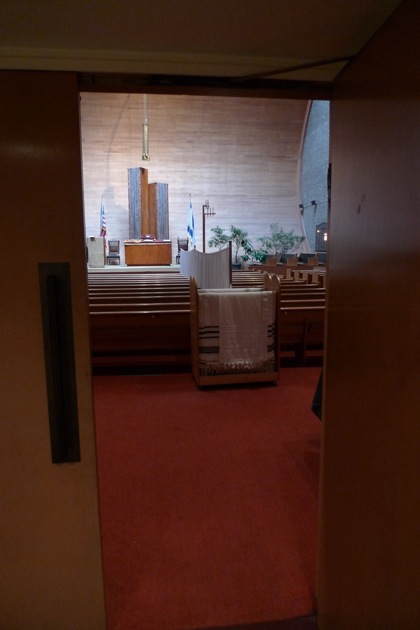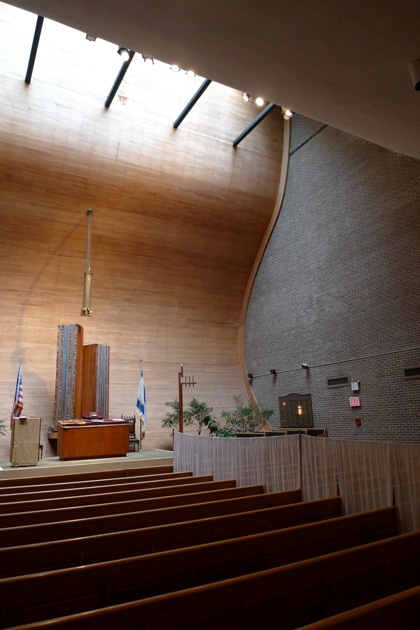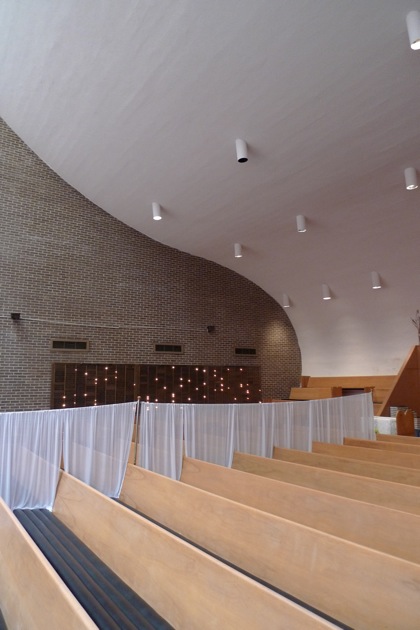A Divine Room
 Evan Swartz of Sign Expo Tribeca organized a networking lunch at the Synagogue for the Arts yesterday, at which I learned (a) the name of Torly Kid, formerly known as Babylicious, is a portmanteau of owner Carol Adams’ kids’ names; (b) people stop by architect Audrey Matlock‘s storefront on West Broadway, either to ask advice, say hi, or sit at the table that the firm puts outside on days much nicer than this one; (c) Tribeca Performing Arts Center is working on a package deal involving local restaurants and the upcoming performances by the St. Petersburg State Ballet Theatre; (d) Chatham Towers has office space for rent; and (e) the synagogue’s sanctuary is available to rent for cultural performances.
Evan Swartz of Sign Expo Tribeca organized a networking lunch at the Synagogue for the Arts yesterday, at which I learned (a) the name of Torly Kid, formerly known as Babylicious, is a portmanteau of owner Carol Adams’ kids’ names; (b) people stop by architect Audrey Matlock‘s storefront on West Broadway, either to ask advice, say hi, or sit at the table that the firm puts outside on days much nicer than this one; (c) Tribeca Performing Arts Center is working on a package deal involving local restaurants and the upcoming performances by the St. Petersburg State Ballet Theatre; (d) Chatham Towers has office space for rent; and (e) the synagogue’s sanctuary is available to rent for cultural performances.
The latter particularly interested me, because the upper part of the synagogue is fascinating from the outside, and I was curious about the corresponding part of the interior. So when rabbi Jonathan Glass offered a tour, I practically ran up the stairs. The building, designed by architect William N. Breger, was built in 1967; Breger was interested in the idea of “floating architecture”—that is, the dramatic wave-shaped structure appears to float over the ground. Rabbi Glass said that Breger was inspired by the idea that Judaism is not rooted the way religions traditionally are, that it “floats” from century to century. As I suspected, the interior of the sanctuary was amazing: Not only is the White Street wall shaped like the façade, but the rear wall is also curved, and there’s a skylight at the top—I felt as if I were inside a vase.



 The room, which seats around 300, tends to host around six cultural events each year, and naturally the synagogue would like to see that number rise. Getting folks to attend has been a challenge, so performers with their own followings might find it more appealing. (There’s also a more traditional event space in the basement level.) For more information, check out tribecamusicandart.org.
The room, which seats around 300, tends to host around six cultural events each year, and naturally the synagogue would like to see that number rise. Getting folks to attend has been a challenge, so performers with their own followings might find it more appealing. (There’s also a more traditional event space in the basement level.) For more information, check out tribecamusicandart.org.















